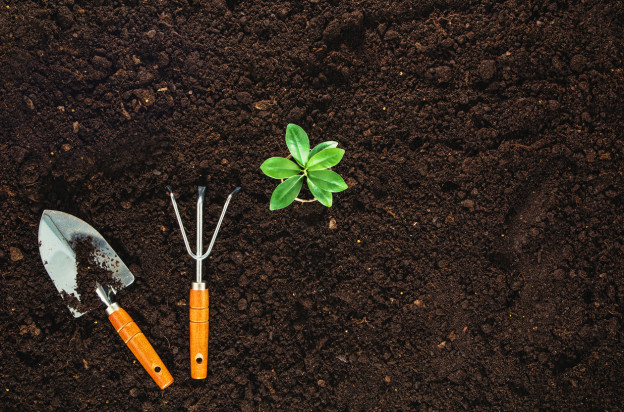As avid gardeners ourselves, we understand the satisfaction of discovering easy techniques and multi-purpose materials which help to keep our gardens healthy.
Here at Bury Hill, we select the best materials and complementary products that we would buy ourselves. One such material, one which you may not have used until now, is our organic soil conditioner: a great peat substitute and nutritional all-rounder that’s ideal for improving all types of soil.
If you have sandy soil which requires a lot of organic matter to improve its health, or temperamental cloggy wet clay soil which is a challenge all year round, soil conditioner is the perfect ingredient for your problematic beds and borders.
How organic soil conditioner is made
Good quality soil conditioner takes time to make, often with a 5-10 year process to utilise the nutrients stored in organic matter. Organic soil conditioner, as the name suggests, is free from artificial substances. It’s produced using 5-year-old composted waste matter, which is then screened to 10mm, making it easy to rake and spread. It’s this natural process which gives the conditioner its dark rich colour and near neutral pH level.
What are the key benefits?
When we talk about using soil conditioner in the garden, we’re simply referring to using organic matter.
Whereas manure provides some nutrients when combined with existing topsoil, however, soil conditioner is most effective when used to help ‘hungry’ plants.
Using your soil conditioner as mulch for your beds and borders – around trees, shrubs, flower borders and vegetable plot – will feed your plants, protect roots from cold snaps, lock in moisture and quash rapid weed growth.
How to use organic soil conditioner
For best results, spread a thick layer approximately 3-4 centimetres deep across the soil, using a fork or spade to incorporate the conditioner into your existing topsoil. This will instantly improve soil structure and fertility.
Due to its excellent nutrient content and water retention properties, soil conditioner promotes root growth while remaining a safe, sterile and stable organic matter to mix into your soil.
Tip: Ensure soil is moist rather than frozen when applying conditioner to a suitable area outside, preferably cleared of weeds beforehand.
Storing soil conditioner for longer-lasting performance
To maintain freshness and performance, store your organic soil conditioner in a dry, frost-free place undercover, away from pesticides and other garden chemicals. Always reseal the bag after use and avoid breathing in dust whilst spreading and storing your soil conditioner.
If you wish to place an organic soil conditioner order, please use our postcode finder to determine delivery and pricing.
